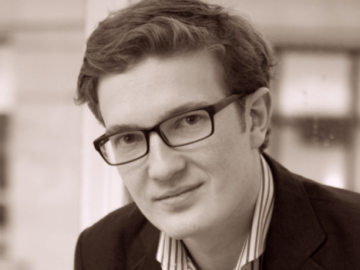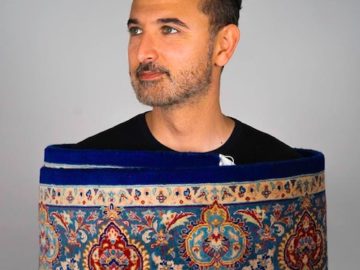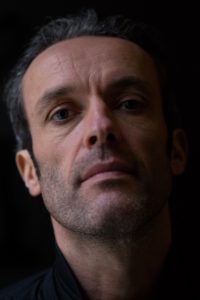
Alex Haw, atmos studio.
Living in the Creative Zone, Transforming the World One Idea at a Time is a collection of interviews with international figures driving change forward through purpose and passion projects. For the next year these interviews will publish on the impactmania.com platform, the complete e-book will be available in 2018.
Writer Jody Turner interviews architect Alex Haw, founder and director of the award-winning art & architecture practice atmos studio, and runs London’s Latitudinal Cuisine — bringing people together around the world to share meals and experiences.
BY JODY TURNER
Hello Alex, great to speak with you today. As a consummate designer, what drives you to create and share your ideas?
“I believe that the design and creation of nurturing, empathetic, inspiring, and stimulating space is key to the problem of how people live. I think we currently suffer from a kind of spatial autism or disconnection, and that this is partially because spaces are no longer tailored to the more elusive meshwork of human desires, but created only in terms of measurable quantities. We struggle to quantify feelings — and thus don’t deal with them.
Part of the problem comes from the steady extraction of intuition from the design process; from the difficulty of identifying what human aspiration we want to design for, and finding the method to do that.
If I can identify intellectually that this or that pragmatic thing needs doing, I still need the empathetic, intuitive drive to enable me to become expert in designing human-centric space, and truly conjure an inhabitable architecture (rather than sculpture or monument) that serves.
These days people seem to often struggle with the physical, non-virtual actuality of other people; they seem more comfortable with the manageable isolation of the virtual. We British used to be very private, private, private – at home in our castles – so this virtuality perhaps came easy to us.
It might appear that we’ve finally opened up and ‘continentalised’; we are blessed with festivals and truly public outdoor spaces, and we all seem to be spending much more time navigating the aleatory in public cafés, and less time at home on the sofa or dining room table.
But too often our experiences of those public spaces will be very virtual, all buried in the managed interactions of laptops and iPhones – tragically disembodied from the more interactive opportunities of the physical. We sit in cafés browsing dating apps, surrounded by single people we don’t dare meet.
Yet when there is so much anxiety surrounding this new public space of social media, it’s rather odd that we don’t reconnect with the unvirtual. The powers of real space are there waiting for us, ready to re-connect and re-align us. When you can tell so much from a simple glance at each other’s faces, why are we wasting so many hours trying to decipher others or express ourselves in words or images that never quite seem to fit or actually connect us?
London is a thriving, creative city, can you tell us how the city influences you in your work and life?
When I moved back to London from the bubbling ethno-social melting pot of New York, I felt fairly isolated because I felt I was surrounded by fairly unempathetic and inexpressive Brits. Salvation came through the international community that accompanied my Argentinian Mexican girlfriend at the time. I came to realize and love how London is a vast bathtub of fascinating people from all over the world; a kind of accidental caravanserai. So unlike the rest of England, it can be a truly beautiful social city. But this connectivity is elusive, and hard to stumble upon. Too often you sense the painful paradox of paying exorbitant amounts of money to live amongst strangers you’ll never meet – to whom you have no point of access.
The difficulty of connecting to our fellow urban dwellers is age-old and acutely (if avoidably) normal – exacerbated by the culture shock of this global media-driven identity shift. It feels a little like a new phase of the urban shock that Siegfried Kracauer once diagnosed – a sense of immersion yet disconnection, richness yet diminution. How amazing that the urban elderly live amongst millions, yet literally die of loneliness. Perhaps the rising power of collaborative consumption and sharing economies will help build the trust that will enable us all to see our fellow urban citizens as resources rather than threats.
In various ways I am trying to do some small bit towards reunification and reconnection; to combat urban loneliness and banality, helping a pro-social community through dinners and connective gatherings, and a broader community through inspirational, interactive design that places humans back at the centre of the agency (& not just perception) of form-making.
In London today, it seems to me that so few people feel spatially ‘at home’ or comfortable with where they are at. So much of what is new in this city is either banal – or confrontational; loud or dreary; either an unhappy absence or an unwelcome intrusion into our spaces. At times it feels there is a slight psychological sadness; a sense of lost opportunity, disconnection, and dehumanization. It’s a haunting problem that goes beyond poverty, unemployment, and loneliness – and one that I feel I have to improve upon.
“On multiple fronts, I am trying to smooth people’s journey through all phases of the everyday – morning, evening and night. As a designer of homes, I think of my work as like a theater choreographer – carefully enabling an elegant ballet through space; curating and improved a sequence of everyday experiences. I’m aiming to bring more pleasure, meaning and purpose to the smallest steps of life; helping set people up for a better day, and be there for them in their dream state.”
How does your personal project with Latitudinal Cuisine fit into your London world, tell us a little about this.
I remember with immense happiness how the occupants of the 1st house we ever designed tuned to me, months down the line, and said that they felt like they were on holiday every day. Healthy fantasies of escape are an intrinsic part of mental wellbeing, enabling us to seek and treasure fresh pleasures – no matter how simple – in our lives each and every day.
I used to work and be in my studio all the time, missing everything else in life. At one point I was spending 120 hours a week at work, and failing to nourish anything outside of it; it was very socially, physically, ethically and mentally unhealthy. Now I throw bimonthly parties and weekly dinner parties guaranteeing, at least, that I don’t spend every night in the studio.
There were several reasons why I created these dinner events in different locations with different parts of the world as theme. For one, I am a pretty bad cook, so cooking for 15 people would still take me tons of time (time I didn’t have). For another, I wanted to structure my explorations of the incredible culinary diversity of an international city like London, where even my humble local supermarket is brimming with so much food I don’t yet recognize or understand (my local is Vietnamese and I live on a Bangladeshi street).
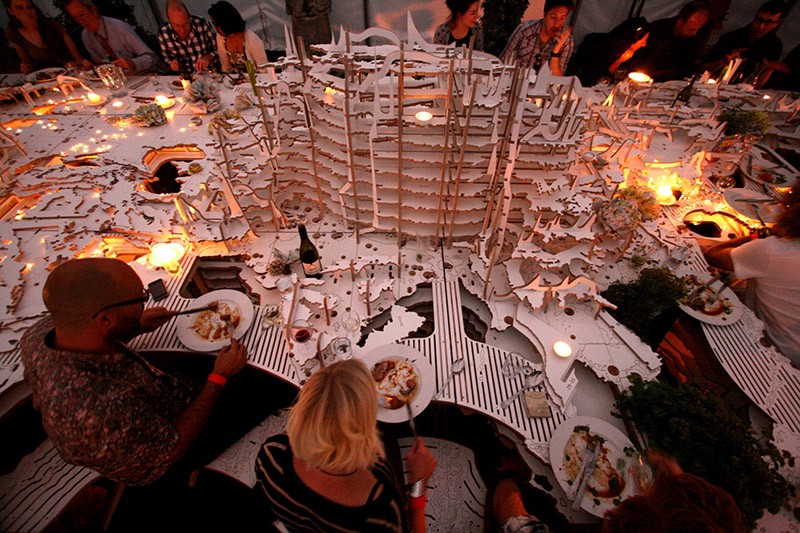
Alex Haw’s Latitudinal Cuisine
So in an inexplicable but heartfelt desire to understand and connect with some of the amazing people of this mirage we call London (a city which truly feels like it’s at its peak), I created these dinners that call us to travel through the world of our city, the world of its people, and the world of world food and culture.
These geo-specific dinners began when I was doing a lot of installation work with maps, with art connecting us to the world and sun and wider universe The simple idea of 360 degrees of world food in 360 days naturally emerged from my geometrical interests in our planet.
It makes the world so tangible. Our pace makes the planetary feel human: at the poles, we’re not even moving (all time-zones co-exist in those small square millimeters), and even at the greatest distance of the equator (which is roughly 24,000 miles), we’re only traveling daily at something like a moderate average walking pace — 66 miles a day across 24 hours.
All maps are distortions; it’s hard to translate the unwrapped skin of an orange into a continuous sheet of paper. The map we use for Latitudinal Cuisine (the rectangular equilateral cylindrical) uses 360 purely-vertical lines of longitude (which spookily never meet, the poles peeled apart) which can thus read as a score or calendar for us to move through. The grid of this rectangular map timeline calls us to move from left to right, scanning through the entire world, stopping at everything; everyone counts. Admittedly Somalia night can be a challenge — and that’s part of the fun.
Since the Prime Meridian runs through London, our home city conveniently becomes our port of embarkation for our annual journey, initiating our yearly scan as the 1st day (and thus menu, easy and familiar) of the year.
There is a London movement (with parallels all over the world – but it was striking here for its inversion of our usual model of privacy) that started around the same few months we started — creating Supper Clubs or restaurants in people’s homes. Some say it was inspired — or at least anteceded by — the Cuban paladares — where a new culinary economy sprang up from dire economic necessity; its London version similarly began at the beginning of the last financial crisis. I think the Supper Clubs still retain some of that legacy – of trying to economize and collectivise, and help others. Last week, for instance, we had a dinner at the home of a wonderful woman who also runs a monthly home restaurant in her home, and sends all the proceeds to Médecins Sans Frontières . We all cooked food from Turkmenistan, Iran, and Azerbaijan — and it was so unexpectedly delicious. Every evening helps us confront our stereotypes, expand our minds, and broaden our palettes.
When is your next dinner and what will the focus be?
Our next dinner is at our own home (each week we rove to a new venue in London), hosting Iran. We’ll be rolling out a carpet and sitting on the floor, traditional style, and we’ll be hosting a few of our Iranian friends, one of whose mother will be reciting some Farsi poetry. And we’ll play some contemporary Iranian electronica, and perhaps project some artwork from someone like Shirin Neshat.
It’s a form of travel without leaving your doorstep, building a rich and resilient gene pool of new friendships. We welcome the globe, and there’s always a different mix of people at a different house or place each week. Ultimately it cultivates a type of generous, explorative, open-minded person who loves the new and incidental. I noticed that amidst all the variety, the dominant type of professional is the documentary filmmaker; someone who likes to immerse themselves in different situations and different cultures.
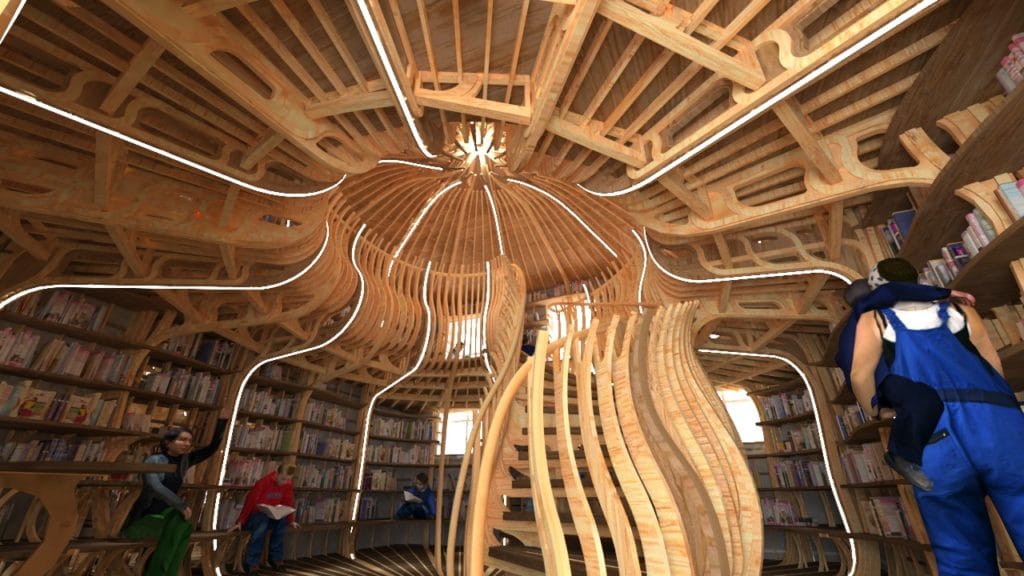
Beautiful. Let’s talk more about your work and the influences that brought you to create with such meaning.
I initially studied at the Bartlett, UCL, and was immersed in an artistic, creative, perhaps slightly eccentric Anglican culture of dreamy inventiveness. Then I shifted on to America on a Fulbright, and did a Masters at Princeton in architecture, which was a completely transformative experience; both cerebral and sensorial, and generally utterly, amazing. All around campus, you felt how the whole community was just in thrall to learning; that being learned and clever had dignity and purpose, which isn’t always a sense you used to get in Britain.
“Learned experience and accumulated expertise are distinct from your inner essence, or perhaps even spiritual essence.
I found that, for all the cerebrality of a place like Princeton, intuition is still always deeply at play. The work being produced there was typically methodical, logical, and argument-driven, yet ultimately it was run by the heart and gut instinct. The weakest work was not the least intellectual, but the least intuitive. It was unspoken, but understood — though seldom discussed, and certainly never taught.”
I studied the history of theatre, started taking video courses, and creating cinematic stories and essays on the side. To this day it still very much influences our studio process at atmos. Even in our most architectural work, we are motivated by the creation and curation of time-based flows and our focus on designing homes is probably because they contain some of the richest and most varied time-based phenomena in architecture. Each home is a constant evolving form of theatre and storytelling: a form of inhabitable spatial video. Everything spatial surrounding us contributes to this kind of immersive, perceptual, tactile maze of latent experience.
Here in the studio we used to be quite conceptual, driven by an abstract idea about space. We were very diagram-driven, and would analyze a problem and space very intensely, but we always found it challenging to translate this into the physical design of a sensorially enriched experience. I’ve now realized that the key problem is how to unlock the spatial answer that triggers the brain and the body at the same time. In a funny way, food is like this, and the dinners have liberated my architectural intention; you have to start with pragmatism (the human need to eat or shelter), yet always add culture. The meal has to be healthy and energizing, but also taste good — and probably even mean something. You have to bring a little embellishment beyond the basic; to help everyone make this a life well-lived.
I often find that when new people start here at the studio they imagine it will just be an orgy of curves. They’re often surprised to discover that our process is iterative, logical, and really quite anal. Yet they then also struggle with the need to be a sentient, sensory, multi-tasking designer that can also implement pleasure beyond the analysis.
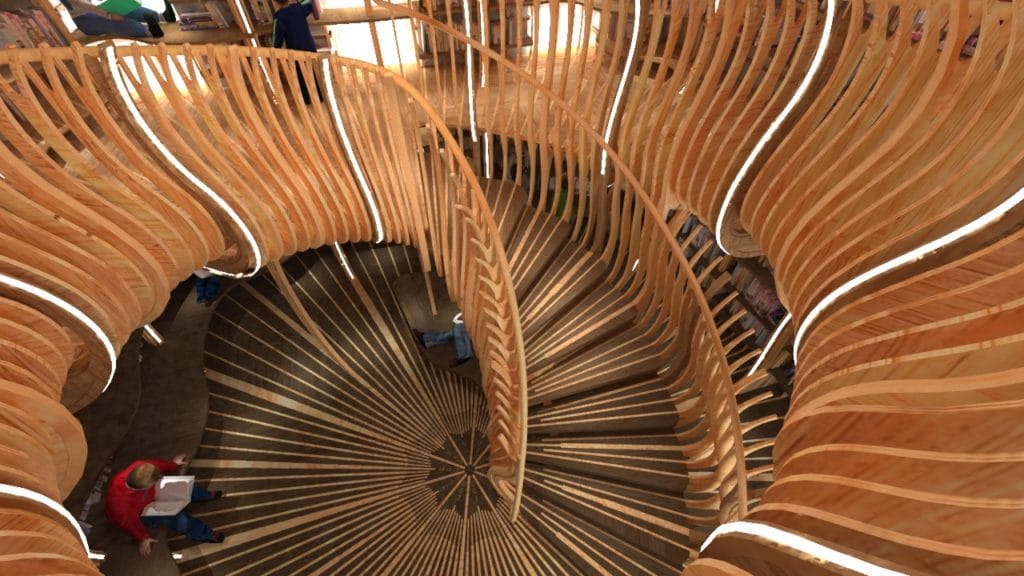
We are always cultivating a sensual, almost luxurious sense of expression with which to solve what would otherwise be simply banal. We want to both solve problems — and heighten pleasure in equal measure. Despite our analytical process, I find there is a huge role for the comprehension and insight that comes from intuition. Enabling that precious moment of absorbing and creatively responding to a situation and problem unencumbered. Intuition enables respite from the aridity and monomania of analysis; a chance to look at a project completely fresh; and a chance to channel more universal truths. It’s not about indulgence or subjectivity or gesture, but about allowing oneself to listen more widely to a person or project or context, and trying to tap into the ineffable energies that we can’t always fully explain.
Beyond our work at atmos, this marriage of analysis and intuition is surely how we all deal with life. We all might measure the weight and calories of our meals, or the exact temperature of the ovens we use to create them, but we also experience a much more universal and more inexplicable moment when we actually biologically engage with all that data — and start eating. We are all called by senses that remain beyond our explanation and articulation. The love of your life may walk by, and yes — you might stop & talk to them, but when it comes down to it — they’ll just smell right. And you might never understand why, but you’ll know when it’s right.”
Thank you Alex for sharing your wonderful inspirations.
Alex Haw is founder and director of the award-winning art & architecture practice atmos studio — dedicated to rethinking and improving our spatial world from furniture to urban design.
atmos studio focusses on producing highly-crafted sensual spaces and designs that deploy cutting-edge fabrication technologies to produce kinesthetic and sensory experiences that are meaningful and beautiful. Much of their work involves digital mapping technologies, exploring the connectivity of people to their precise place in the world.
Previously Alex Haw has worked with Rogers Stirk Harbour + Partners on the Heathrow T5 Airport and Korea’s Yeouido apartments. With Grimshaw Architects he worked on the Paddington underground station, and also did many projects for Diller + Scofidio. For Tonkin Zulaikha Greer Architects, he worked on the Olympic pylons and with Seth Stein Architects on various homes.
Haw has taught architecture at the Architectural Association, the Royal College of Art, Cambridge University, and TU Vienna. He has a first class degree from the Bartlett (University College London) and studied at Princeton University on a Fulbright. He writes and lectures widely.
Alex Haw currently runs London’s Latitudinal Cuisine — bringing people together around the world to share meals and experiences.

